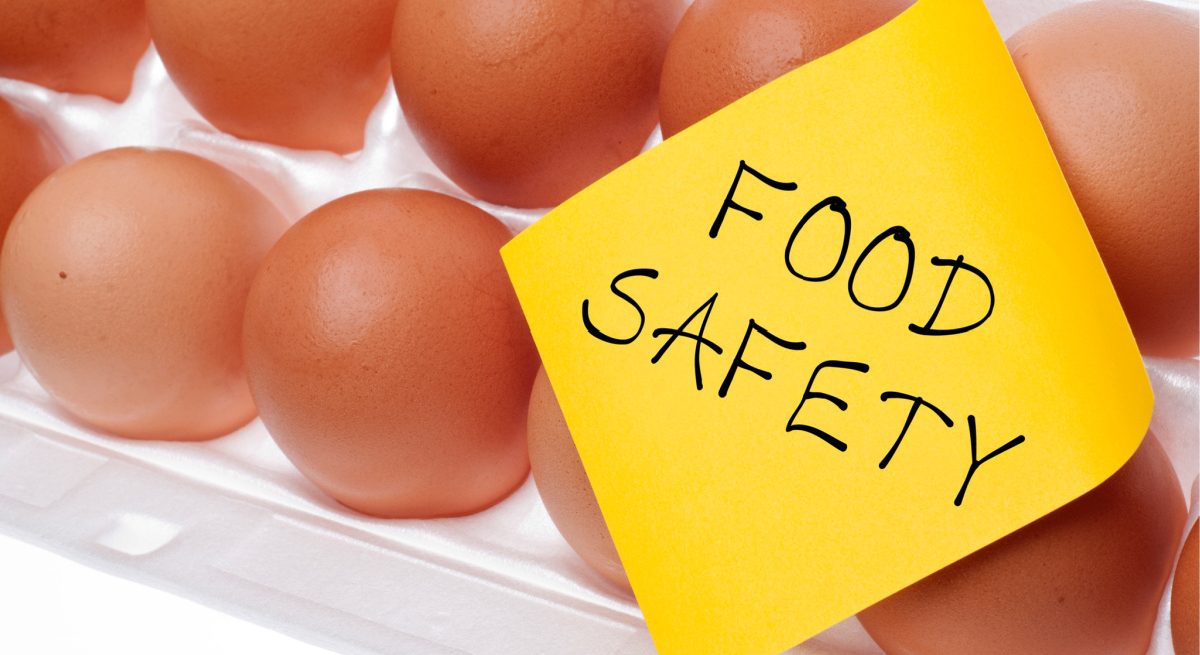Elevate Your Food Safety Culture to Survive the COVID Crisis and Future Ones
5 Min Read By Kari Hensien
Adults with confirmed COVID-19 were twice as likely to have dined at a restaurant in the 14 days before becoming ill, according to the Centers for Disease Control and Prevention (CDC). That statistic is alarming — both for consumers and the restaurant industry.
As the COVID-19 pandemic continues past the six-month mark, people remain wary about dining out. The combination of stay-at-home orders, ongoing COVID restrictions, spikes in COVID numbers, and consumer fear about the risks of dining out are significantly impacting the restaurant industry.
Due to social distancing, occupancy restrictions, and general caution about being in public places, consumers have been less likely to dine in restaurants since March. Per Statista, the year-over-year decline of seated diners in U.S. restaurants was an astonishing 43.38 percent as of September 30, 2020.
So, how can the restaurant industry regain people’s trust and increase business? And how can we combat whatever factors are contributing to the CDC statistic about people dining in restaurants being twice as likely to contract the virus? A good first step is to elevate your food safety culture.
How Food Safety Culture Has Changed
Food safety used to mean “what you do when no one is watching.” Restaurant employees would practice proper protocols behind the scenes: cooking foods to proper temperatures, avoiding cross-contamination, washing hands and equipment, etc. Guests would assume restaurants — and the meals prepared there — were safe.
Now, understandably, everyone is watching to ensure safety protocols are being followed. When consumers venture out to restaurants, they want to see tables separated by at least 6 feet, employees cleaning constantly, and everyone wearing masks onsite. They no longer have the blind trust that they had pre-COVID-19. They are scrutinizing restaurants, stores, and other public venues to see if employees are following every precaution to mitigate risk and maximize safety.
For the most part, restaurants have adopted COVID-related safety protocols. Masks, hand sanitizer, social distancing, non-contact service, and other CDC recommendations are being followed in addition to the food safety protocols already in place. Now that the initial panic around COVID-19 has subsided and we’re all adapting to our “new normal,” here are five actionable steps for restaurants to take to elevate their food safety culture and keep employees and guests safer.
1. Move Toward Supportive (Not Punitive) Programs
This means removing any sort of “punishment” for noncompliance. This kind of punitive system only encourages location employees to do “just enough” to stay under the radar. Remember: when employees feel engaged and valued, they’re more likely to “buy in” to the ideas presented.
If employees know that by being honest, they’ll get help and support from their managers, they’re more likely to help you catch small issues that can be fixed immediately. And this inherently trickles down to improve customer experience and brand management.
Rewarding employees for following proper protocols doesn’t have to be expensive or time-consuming. They can be as simple as acknowledgements in staff meetings or naming them employee of the month. If budget allows, small gestures like a gift certificate to a local coffee shop can be a good motivator, and it supports other food service businesses that may be struggling during the pandemic.
2. Treat Location Employees Like Assets
Your location employees are integral to the success of your business, so treat them like the assets they are. Make them feel important, valued, appreciated, and heard.
Boost employee confidence by explaining the purpose behind all the rules and standards, so the rules don’t feel arbitrary. Don’t just tell employees to disinfect high-touch surfaces, tell them why this practice is vital to the safety of your restaurant, employees, and guests. Remember, they may feel overwhelmed by the added tasks they need to do each shift, so tell them you’re all in this together, and you appreciate their ongoing efforts.
Since your location employees have the most contact with customers, their input is essential — make sure they realize this.
3. Get a Better View of Your Business
It’s more important than ever before to get a robust view of your business to ensure compliance and identify potential trouble spots. That means getting an accurate view across the entire enterprise, as well as drilling down to specific regions and locations.
Gaining an accurate, real-time perspective is extremely challenging if you’re using manual processes — such as paper, emails, and spreadsheets — or using a tech solution that only does one thing, such as a checklist app. The key to success is to use the right tools for the task. There are many quality management system software options that will enhance your food safety culture and business insights. Today’s solutions — which are affordable, accessible, and user-friendly — offer multiple benefits.
The right tools allow you to share updated rules or standards with every location simultaneously, creating a single source of truth that employees know is up-to-date and accurate. The software solutions that include built-in analytics can also indicate potential hot spots, so you’re aware of where your attention is needed most, from trainings to compliance to supply issues.
4. Use the Right Digital Tools
This is the year that restaurants must move away from antiquated spreadsheets and paper systems to start using Quality Management System Software. The right software sets you up for success with your food safety culture, quality management systems, and food safety programs.
Software systems allow you to gather data quickly and aggregate it from many sources as well as store data centrally to create a single source of truth, automate corrective action (CAPA), and more. Additionally, you’ll save loads of time hunched over paper records and spreadsheets trying to connect the dots and glean insights.
It is especially clear that now’s the time to reevaluate your use of software with the advent of the FDA’s New Era Blueprint, which clearly shows that technology advancement will be the bare-minimum requirement in the future.
5. Ensure that Your Leaders “Walk the Walk”
Restaurant leadership plays an essential role in amplifying an organization’s food safety culture, so help managers, directors, and owners prioritize food safety. Leaders need to reiterate the importance of the food safety goals and culture, explaining that everyone must comply for the effort to be successful.
Make sure all leaders and managers explain why the rules are in place, providing context for employees on why the various protocols matter. Also, train leaders to practice what they preach, such as wearing masks, social distancing, and modeling other safety behaviors. This also includes communicating their commitment to a safe culture in all that they do.
Elevating your food safety culture is essential to surviving this crisis — and any crisis that may follow. While it may seem overwhelming to implement additional items to your existing protocols, you don’t have to do everything at once. Start with one item and add more over time to amplify your safety culture and ensure employee buy-in across your business. Ultimately, when you take one step at a time, you’ll be moving in the right direction.


